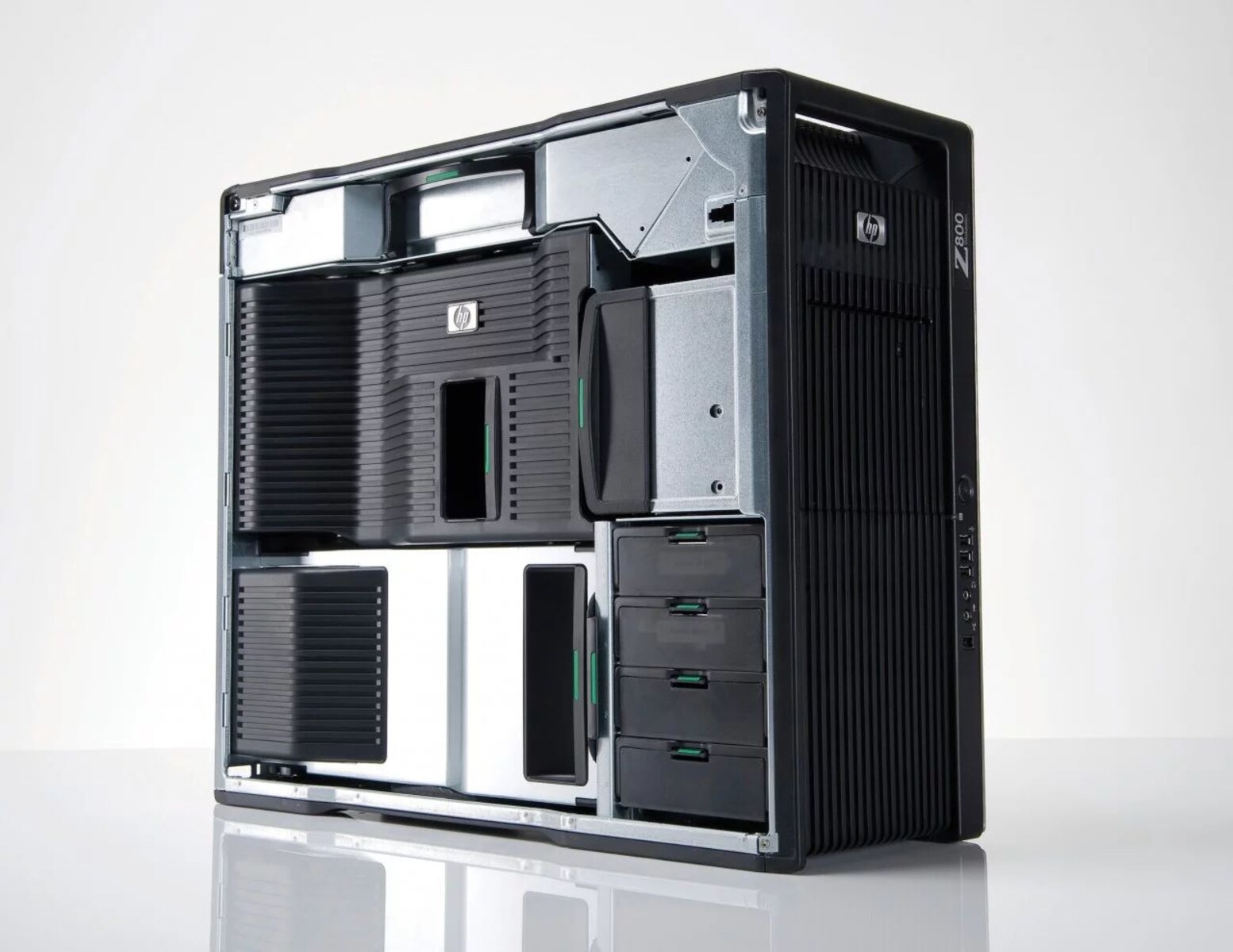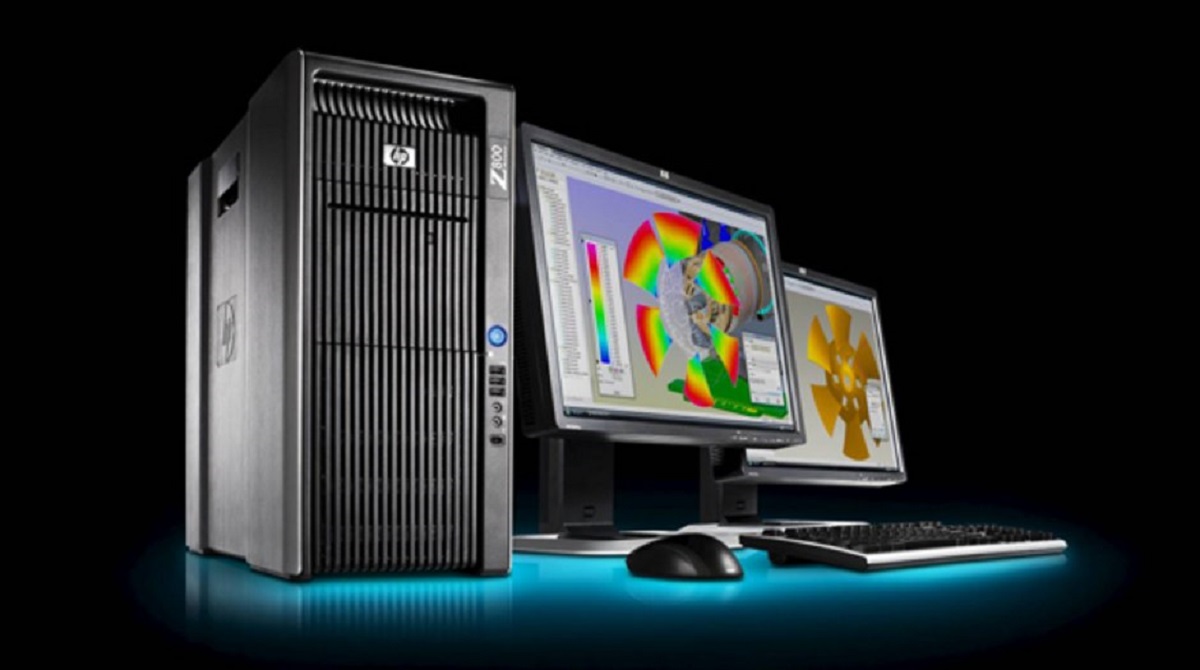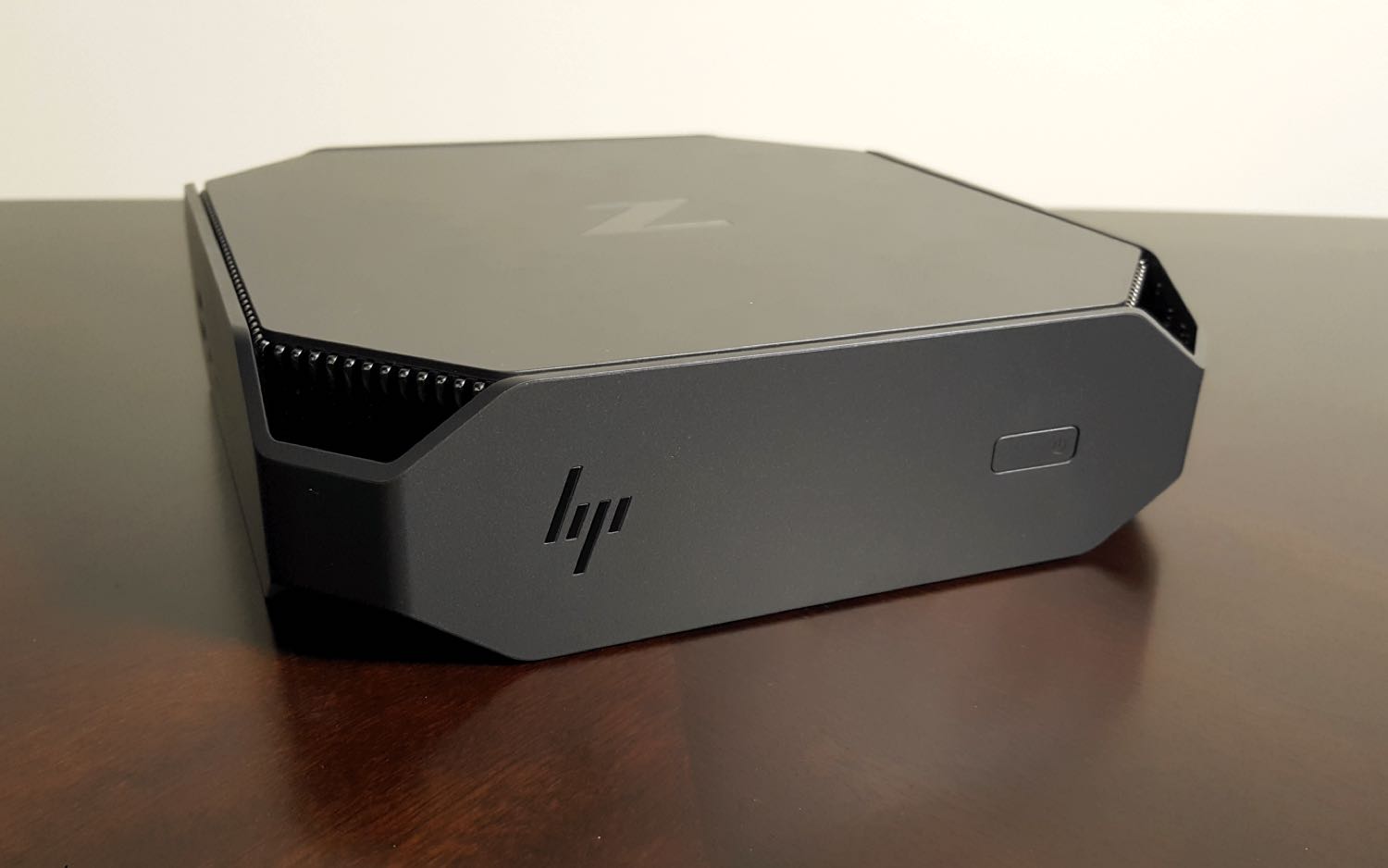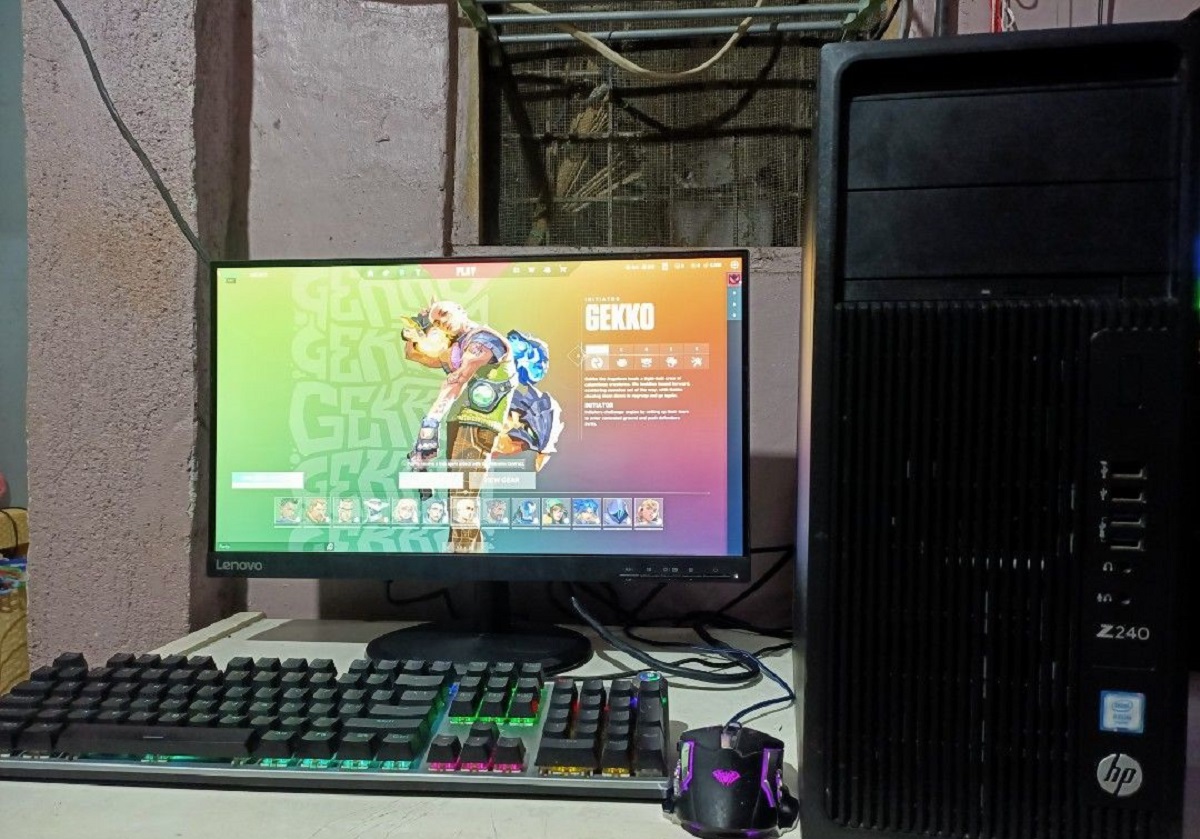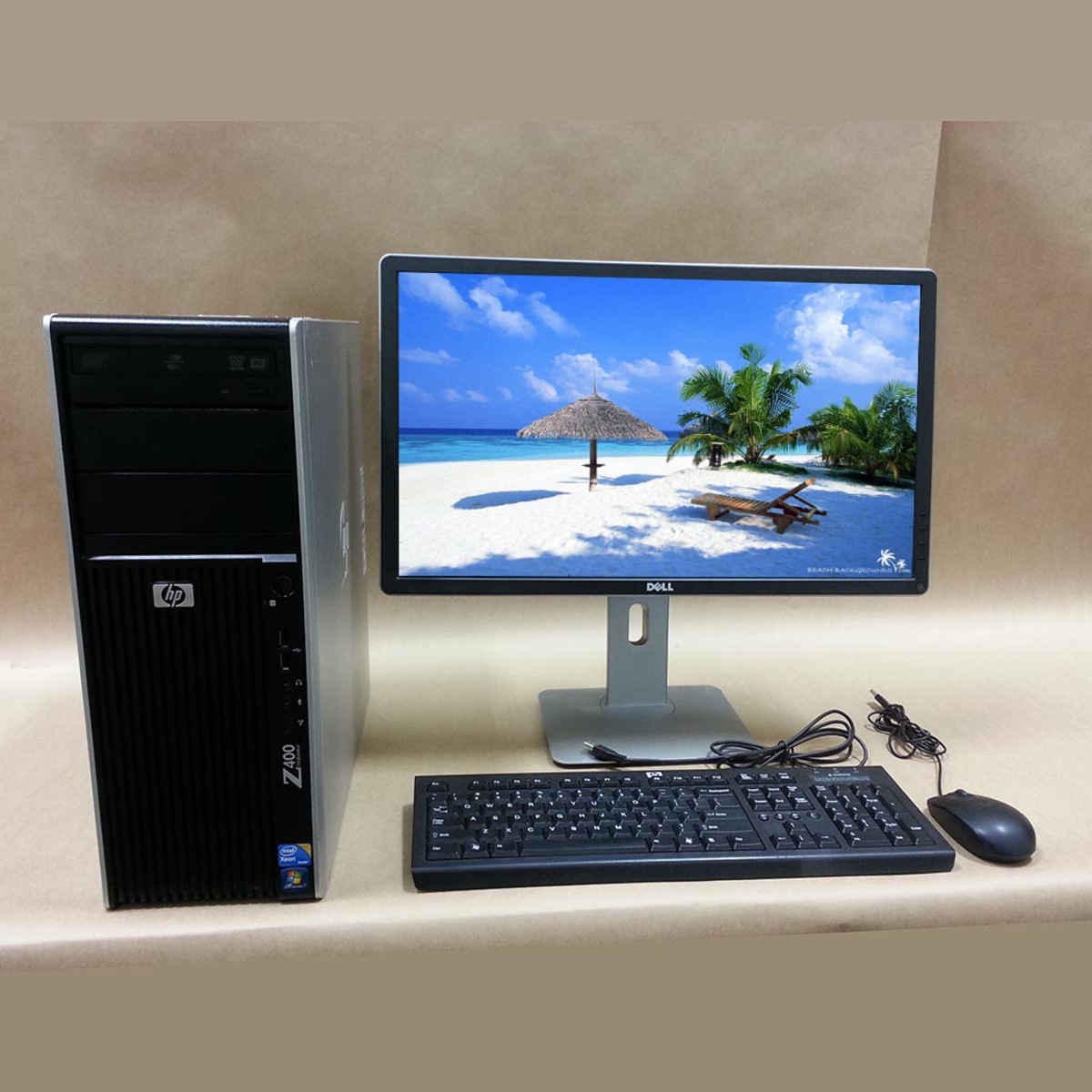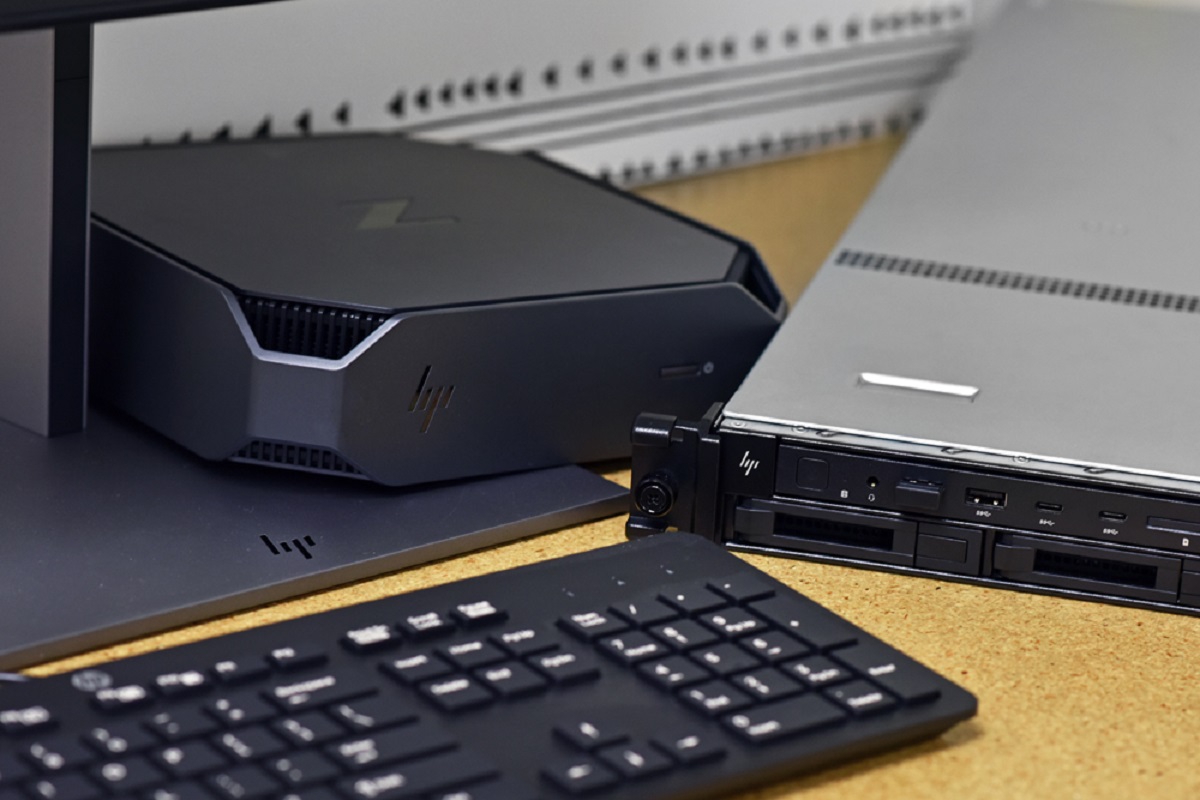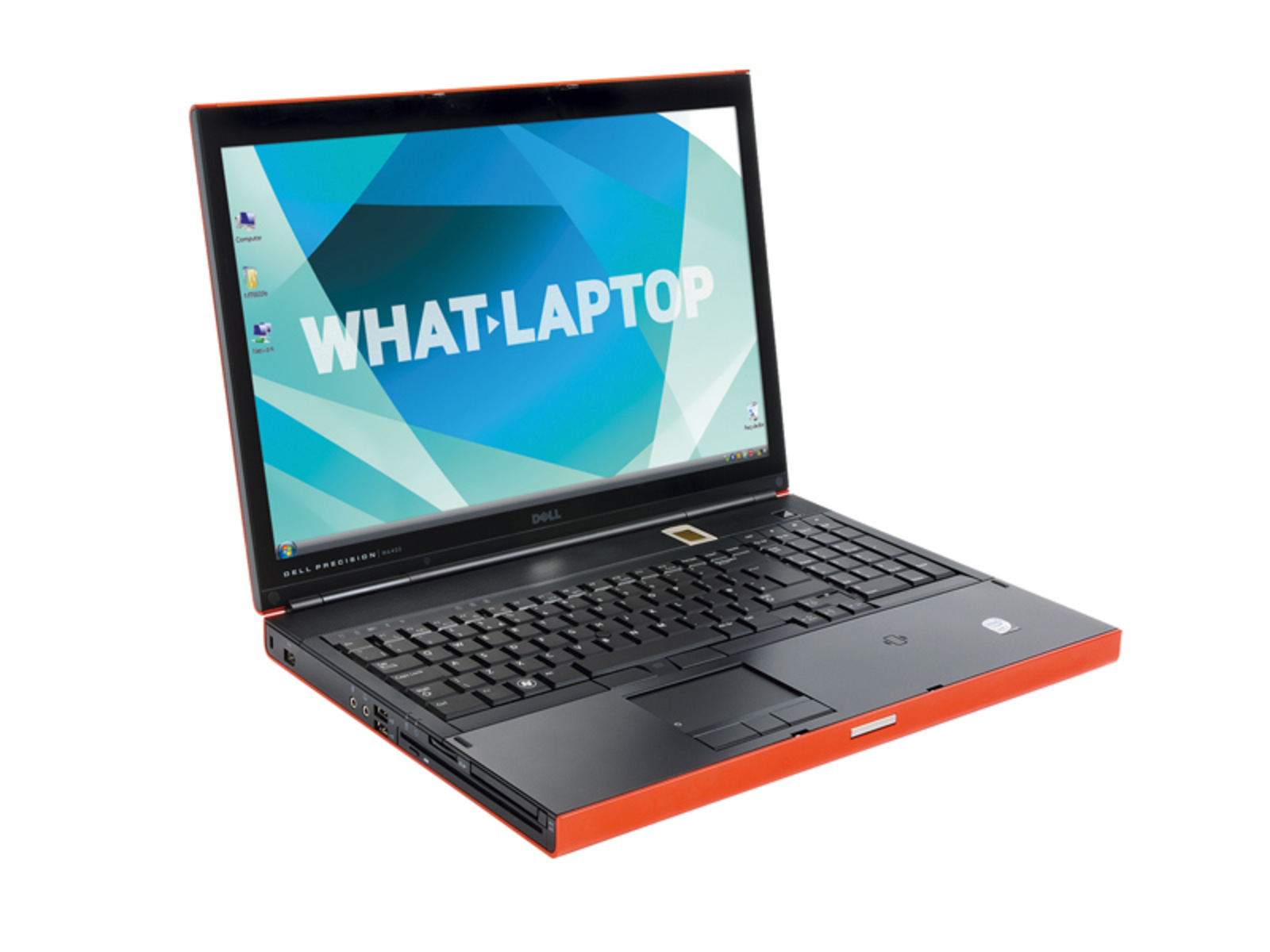Introduction
Welcome to the world of high-performance workstations! If you’re the proud owner of a Z800 workstation with Xeon 5677 processors, you’re already aware of the incredible power and capabilities it offers. However, to truly optimize its performance, it’s essential to ensure that you have the right memory installed.
Memory plays a crucial role in the overall functionality and speed of your workstation. It allows your computer to access and process data quickly, making it essential for multitasking, complex applications, and resource-intensive tasks. Upgrading your memory can dramatically enhance your workstation’s performance and enable you to handle even the most demanding workloads with ease.
In this article, we will guide you through the process of determining the memory requirements for your Z800 workstation with Xeon 5677 processors. We will help you understand the compatibility, type, capacity, speed, and ECC support needed for your memory modules. Additionally, we will provide you with step-by-step instructions for installing and verifying the installed memory.
Whether you’re a professional in the fields of graphic design, video editing, 3D modeling, or scientific research, having the right memory configuration is vital for achieving optimal performance. By following the guidelines in this article, you’ll be able to ensure that your Z800 workstation is equipped with the appropriate memory to handle your demanding tasks efficiently.
So, let’s dive in and explore the world of memory requirements for your Z800 workstation with Xeon 5677 processors. By the end, you’ll have a clear understanding of what you need and how to upgrade your workstation’s memory for top-notch performance.
Understanding Memory
Before we delve into the specifics of memory requirements for your Z800 workstation, let’s start by understanding the basics of memory and its role in computer performance. Memory, also known as RAM (Random Access Memory), is a volatile storage component that allows your computer to store and retrieve data quickly.
Think of RAM as your workstation’s short-term memory. It provides a temporary workspace for your operating system and applications to load and process data. When you launch a program or perform a task, it is temporarily stored in RAM, allowing for quick access and execution. The more RAM you have, the more data your computer can hold simultaneously, resulting in better multitasking and smoother performance.
Memory works hand in hand with your workstation’s processor to execute tasks. When the processor needs data, it requests it from RAM. The faster the RAM can transfer data, the faster the processor can perform tasks. Additionally, the capacity of your memory determines how much data can be stored at a given time.
It’s important to understand that memory differs from storage devices like hard drives or solid-state drives (SSDs). While storage devices provide long-term storage for files and programs, RAM is responsible for the temporary storage required for active tasks. Once you power off your workstation, the data in RAM is wiped out, making room for new data when you power it back on.
When it comes to memory modules, they come in various forms, including DIMMs (Dual In-Line Memory Modules) and SIMMs (Single In-Line Memory Modules). These modules contain integrated circuits that store data in binary form.
Now that we have a basic understanding of memory and its role in your workstation, let’s move on to determine the specific memory requirements for your Z800 workstation with Xeon 5677 processors.
Determining the Appropriate Memory
To ensure optimal performance for your Z800 workstation with Xeon 5677 processors, it’s crucial to determine the appropriate memory configuration. Several factors come into play when determining the right memory for your workstation, including processor compatibility, type of memory required, memory capacity, and memory speed and ECC support.
Processor Compatibility
Before selecting memory modules, it’s essential to check their compatibility with your Xeon 5677 processors. The Z800 workstation supports a range of processor models, so it’s important to verify the maximum memory speed and the type of memory that your processors can handle. Consult the workstation’s documentation or manufacturer’s website to find the specific compatibility details for your processor model.
Type of Memory Required
The Z800 workstation accepts DDR3 SDRAM memory. This type of memory provides fast data transfer rates and is available in various capacities and speeds. Be sure to select DDR3 memory modules that are suitable for your workstation’s motherboard and processor specifications.
Memory Capacity Needed
The amount of memory you need depends on the nature of your work and the applications you use. Workstations with Xeon 5677 processors are designed for high-performance computing, so it’s recommended to have a minimum of 8 GB of RAM. However, if you work with resource-intensive applications such as video editing or CAD software, you may benefit from 16 GB or more of memory.
Memory Speed and ECC Support
Memory speed refers to the rate at which data can be transferred between memory modules and the processor. Higher memory speeds result in faster task execution. Additionally, Z800 workstations support ECC (Error-Correcting Code) memory, which can detect and correct errors in data. ECC memory is highly recommended for applications where data integrity is critical, such as scientific simulations or financial modeling.
By considering these factors – processor compatibility, type of memory required, memory capacity, and memory speed and ECC support – you can determine the appropriate memory configuration that will optimize the performance of your Z800 workstation with Xeon 5677 processors.
Processor Compatibility
When it comes to determining the appropriate memory for your Z800 workstation with Xeon 5677 processors, processor compatibility is a crucial factor to consider. Ensuring that your memory modules are compatible with your processors is essential for optimal performance and stability.
The Z800 workstation supports a range of processor models, and it’s important to verify the maximum memory speed and the type of memory that your processors can handle. Different processor models have varying specifications, so it’s essential to consult the workstation’s documentation or the manufacturer’s website for detailed compatibility information.
One of the key considerations is the maximum memory speed supported by your processors. This determines the speed at which data can be transferred between the memory modules and the processor. It’s important to choose memory modules that match or exceed the maximum memory speed supported by your processors to fully leverage their capabilities and achieve optimal performance.
Additionally, you need to identify the type of memory required for your processors. The Z800 workstation with Xeon 5677 processors supports DDR3 SDRAM (Double Data Rate 3 Synchronous Dynamic Random-Access Memory), which provides fast data transfer rates and is widely available in the market. Be sure to select DDR3 memory modules that are compatible with your workstation’s motherboard and the specific processor model.
By ensuring processor compatibility, you can guarantee that the memory you choose will seamlessly integrate with your Z800 workstation’s processors. This compatibility ensures stability, reliability, and optimal performance for your high-performance computing needs.
Remember to consult the documentation or the manufacturer’s website to find the specific compatibility details for your Xeon 5677 processors. By selecting memory modules that are compatible with your processors, you can build a powerful and efficient memory configuration that will enhance the performance of your Z800 workstation.
Type of Memory Required
When it comes to determining the appropriate memory for your Z800 workstation with Xeon 5677 processors, understanding the type of memory required is essential. The Z800 workstation supports DDR3 SDRAM (Double Data Rate 3 Synchronous Dynamic Random-Access Memory), a widely used and readily available memory type.
DDR3 SDRAM memory modules provide fast data transfer rates, making them ideal for high-performance computing. They are available in various capacities and speeds to meet the requirements of different applications and workloads. It’s important to select DDR3 memory modules that are compatible with your workstation’s motherboard and processor specifications.
DDR3 memory modules come in different form factors, including DIMMs (Dual In-Line Memory Modules) and SIMMs (Single In-Line Memory Modules). DIMMs are the most common form and are typically used in desktop and workstation systems. They have a larger number of pins and provide higher bandwidth compared to SIMMs.
When selecting DDR3 memory modules, consider the speed and capacity requirements of your applications. Workstation tasks such as 3D modeling, video editing, and scientific simulations benefit from higher memory speeds, as it allows for faster data transfer between the memory and the processor. Look for memory modules with faster clock speeds to ensure optimal performance.
Capacity is another important aspect to consider when selecting memory modules. The amount of memory you need depends on the nature of your work and the applications you use. For moderate workloads, a minimum of 8 GB of RAM is recommended. However, if you work with resource-intensive applications, such as CAD software or virtualization, it’s advisable to consider 16 GB or more to ensure smooth multitasking and efficient performance.
By selecting the appropriate type of memory – DDR3 SDRAM – and considering the speed and capacity requirements of your applications, you can build a memory configuration that will meet the demands of your Z800 workstation with Xeon 5677 processors. Upgrading your memory to the right type and capacity will enhance the overall performance and responsiveness of your workstation, allowing you to tackle complex tasks with ease.
Memory Capacity Needed
When determining the appropriate memory for your Z800 workstation with Xeon 5677 processors, considering the memory capacity is crucial. The amount of memory you need depends on the nature of your work, the applications you use, and the level of multitasking you require.
Workstations with Xeon 5677 processors are designed for high-performance computing, making them suitable for demanding tasks such as graphic design, video editing, 3D modeling, and scientific research. To ensure smooth operation and efficient performance, a minimum of 8 GB of RAM is recommended.
Having 8 GB of RAM allows your workstation to handle everyday tasks with ease. It can provide sufficient memory to run multiple applications simultaneously, while still maintaining good performance. With 8 GB of RAM, you should be able to work comfortably with applications like Adobe Creative Suite, Autodesk Maya, or MATLAB.
However, if you work with highly resource-intensive applications or deal with large datasets, you may benefit from upgrading to 16 GB or more of RAM. This increased capacity allows for smoother multitasking, faster data processing, and improved overall performance.
For example, if you are working on complex 3D rendering or simulations, having 16 GB or more will significantly enhance your workflow, allowing for faster rendering times and smoother interaction with your designs. Similarly, video editing professionals dealing with high-definition footage or multi-camera projects will benefit from the increased memory capacity for seamless editing and previewing.
It’s important to consider your specific requirements and the applications you use regularly when determining the memory capacity needed for your workstation. Assess the memory requirements of your most demanding tasks and choose a capacity that meets or exceeds those needs.
Investing in sufficient memory capacity ensures that your Z800 workstation can handle resource-intensive activities without slowing down or experiencing performance bottlenecks. Upgrading to 16 GB or more of RAM provides ample headroom for demanding tasks, allowing you to work effectively and efficiently.
By carefully considering your workload and the level of multitasking you require, you can determine the memory capacity needed to enhance the performance of your Z800 workstation with Xeon 5677 processors.
Memory Speed and ECC Support
When it comes to selecting the appropriate memory for your Z800 workstation with Xeon 5677 processors, considering memory speed and ECC (Error-Correcting Code) support is crucial. These factors play a significant role in the performance, reliability, and data integrity of your workstation.
Memory speed refers to the rate at which data can be transferred between the memory modules and the processor. It determines how quickly your workstation can access and process data, making it a vital factor in overall performance. Higher memory speeds, measured in MHz (megahertz), result in faster task execution and improved responsiveness, especially when dealing with resource-intensive applications.
To leverage the full potential of your Z800 workstation and its Xeon 5677 processors, it’s important to choose memory modules that match or exceed the maximum memory speed supported by your processors. Consult the documentation or the manufacturer’s website to find the specific details regarding the supported memory speeds for your processors.
Another critical aspect to consider is ECC support. ECC memory, or Error-Correcting Code memory, is designed to detect and correct errors in data. This is particularly important in workstations where data integrity is critical, such as scientific simulations, financial modeling, or any application where even the slightest error can have significant consequences.
Z800 workstations with Xeon 5677 processors support ECC memory, which provides an additional layer of data protection and ensures the accuracy and reliability of your calculations. By using ECC memory, you can mitigate the risk of data corruption and prevent potential system crashes or errors during critical computation processes.
If you regularly work on projects that require high data integrity or deal with massive, complex datasets, ECC memory is highly recommended. However, if you primarily use your workstation for general tasks like web browsing, word processing, or basic graphic design, non-ECC memory may be sufficient for your needs.
By selecting memory modules that offer higher speeds and incorporate ECC support, you can ensure both optimal performance and data reliability for your Z800 workstation with Xeon 5677 processors.
Consider the requirements of your specific applications and the level of data integrity required for your work to make an informed decision about the memory speed and ECC support needed for your workstation.
Installing the Memory
Once you have determined the appropriate memory for your Z800 workstation with Xeon 5677 processors, the next step is to install the memory modules. Installing memory is a straightforward process, but it’s crucial to follow the correct steps to ensure proper installation and avoid any potential issues.
Accessing the Memory Slots
Before installing the memory modules, power off your workstation and disconnect it from the power source. Locate the memory slots on your motherboard, usually found near the CPU socket. Refer to your workstation’s documentation or the manufacturer’s website for the exact location of the memory slots.
Handling the Memory Modules
Take precautions when handling the memory modules to protect them from electrostatic discharge (ESD). ESD can damage the sensitive components of the modules. Before touching the memory modules, discharge any static electricity by touching a grounded object. Handle the modules by the edges and avoid touching the gold contacts or any exposed circuits.
Inserting the Memory Modules
Align the memory module with the slot, ensuring that the notch on the module aligns with the key in the slot. Gently push the module into the slot until it firmly seats into place. Apply equal and firm pressure on both ends of the module to ensure a secure connection. You should hear a click sound or notice the retention clips on the sides of the slot securing the module in place.
Securing the Memory Modules
After inserting the memory modules, it’s important to secure them properly to prevent any movement or disconnection. Press down on the module while pushing the retention clips on both sides of the slot until they snap into place. This ensures that the memory modules are firmly and securely seated in the slots.
After installing the memory modules, reconnect your workstation to the power source and power it on. The system will automatically detect the new memory configuration and adjust accordingly. You can verify the installed memory in the operating system or by accessing the BIOS settings of your workstation.
Remember to consult the documentation or the manufacturer’s website for any specific instructions or considerations regarding memory installation for your Z800 workstation. By following these steps, you can confidently install the memory modules and ensure that your Z800 workstation is equipped with the necessary memory for optimal performance.
Accessing the Memory Slots
Before you can install the memory modules into your Z800 workstation with Xeon 5677 processors, it’s important to locate and access the memory slots on your workstation’s motherboard. The memory slots are where the memory modules will be inserted to provide the additional memory capacity for your system.
To access the memory slots, follow these steps:
1. Power off and Disconnect
Before you begin, ensure that your workstation is powered off completely and disconnected from the power source. This will ensure your safety and prevent any potential damage to the components during the installation process.
2. Locate the Memory Slots
Once your workstation is powered off, open the case to reveal the internal components. The memory slots are typically located near the CPU socket on the motherboard. The exact placement and arrangement of the memory slots may vary depending on the specific design of your Z800 workstation.
3. Consult Documentation or Manufacturer’s Website
If you’re unsure about the location or arrangement of the memory slots, it’s always advisable to consult the documentation that came with your Z800 workstation. Alternatively, you can visit the manufacturer’s website and look for the user manual or technical specifications of your specific workstation model.
4. Visual Inspection
Perform a visual inspection of the motherboard, looking for slots with notches or keys that match the memory module design. The memory slots are usually long, rectangular slots with a retaining clip on each end to hold the memory module in place.
5. Ground Yourself
Before touching any components inside the case, it’s essential to ground yourself to prevent any potential electrostatic discharge (ESD) that could damage the sensitive electronic components. You can do this by touching a grounded metal surface or using an anti-static wristband.
By following these steps, you will successfully locate and access the memory slots of your Z800 workstation. Once you have accessed the memory slots, you can proceed to the next steps in installing the memory modules to expand your workstation’s memory capacity and enhance its performance.
Handling the Memory Modules
When it comes to installing memory modules into your Z800 workstation with Xeon 5677 processors, it’s crucial to handle them with care to avoid any potential damage. Memory modules are sensitive electronic components that can be easily affected by electrostatic discharge (ESD) and mishandling.
Follow these guidelines to ensure proper handling of memory modules:
1. Discharge Static Electricity
Before touching the memory modules, it’s essential to discharge any static electricity from your body. You can do this by touching a grounded object, such as a metal surface or a properly grounded electrical outlet. This step helps prevent any potential ESD from damaging the sensitive components.
2. Handle by the Edges
When handling memory modules, it’s important to hold them by the edges. Avoid touching the gold contacts or any exposed circuits on the modules. Oils and residues from your fingers can interfere with the proper functioning of the modules and may lead to connectivity issues.
3. Avoid Physical Pressure or Bending
Handle the memory modules with care and avoid applying excessive physical pressure or bending them. These components are delicate and can be easily damaged. Mishandling may result in bent pins or other damage that can render the modules unusable.
4. Use Anti-Static Measures
If available, consider using an anti-static wristband or mat when handling the memory modules. These anti-static measures help dissipate any potential buildup of static electricity and provide additional protection for the modules.
5. Keep Modules in Anti-Static Packaging
When not in use, keep the memory modules in their original anti-static packaging. This packaging is designed to protect the modules from ESD and is the safest place to store them. Avoid placing them on surfaces that can generate static electricity, such as carpets or plastic surfaces.
Remember, mishandling memory modules can result in damage that may prevent your Z800 workstation from functioning correctly. By following the proper handling guidelines, you can protect the modules and ensure a successful installation process.
By taking the necessary precautions and handling the memory modules with care, you can minimize the risk of damage and ensure the longevity and reliability of your Z800 workstation’s memory configuration.
Inserting the Memory Modules
After properly handling the memory modules, the next step in upgrading the memory of your Z800 workstation with Xeon 5677 processors is to insert the modules into the memory slots. This process is straightforward, but it’s important to follow the correct steps to ensure a successful installation and optimal performance.
1. Aligning the Memory Modules
Take one memory module at a time and align it with the corresponding memory slot on the motherboard. The memory slot has a notch or key that matches the design of the memory module. Make sure the notch on the module aligns with the key in the slot.
2. Applying Even Pressure
Gently but firmly hold the memory module by the edges and press it horizontally into the slot. Apply equal pressure on both ends of the module to ensure it is properly seated. Use your thumbs or fingers to press down on the module evenly. You should feel a slight resistance as the module is inserted.
3. Confirming Firm Connection
Push down on the memory module until it is fully seated in the slot. It should fit snugly without any gaps visible between the module and the slot. Ensure that the retaining clips on each side of the slot automatically close and securely hold the memory module in place.
4. Verifying the Installation
Once you have inserted the memory module, visually inspect it to ensure it is properly seated and secure. Check that the module is level and aligned with the adjacent modules, if any. If there are multiple memory modules to install, repeat the process for each one.
Note that memory modules are designed to be inserted at a slight angle and then pushed down horizontally. Do not force the module into the slot or use excessive pressure, as this can damage the module or the motherboard.
By following these steps and ensuring proper alignment and secure insertion, you will successfully install the memory modules into the memory slots of your Z800 workstation. Once all the modules are installed, you can proceed to secure them and verify the installed memory capacity through the system’s BIOS settings or operating system information.
Securing the Memory Modules
After inserting the memory modules into the memory slots of your Z800 workstation with Xeon 5677 processors, the next step is to secure them properly. This ensures that the memory modules are firmly held in place and prevents any movement or disconnection that could affect their performance or stability.
1. Apply Pressure
While the memory modules are inserted into the memory slots, press down on the modules evenly with your fingers. Applying gentle but firm pressure ensures that the modules are seated correctly and flush with the motherboard.
2. Engage the Retention Clips
On each side of the memory slot, you will find retention clips. These clips are designed to hold the memory modules firmly in place. Use your thumbs or fingers to push the retention clips towards the memory modules until you hear a clicking sound or feel them engage.
3. Check for Firm Connection
After engaging the retention clips, visually inspect the memory modules to ensure they are securely fastened. Look for any noticeable gaps between the motherboard and the modules. The modules should be level, aligned with each other, and flush with the surrounding components.
4. Verify Stability
Gently wiggle the memory modules or apply slight pressure to check for any movement. The modules should remain firmly seated in the memory slots without any sign of looseness. If the modules feel loose or are not securely held in place, repeat the process of applying pressure and engaging the retention clips.
Properly securing the memory modules is essential for maintaining a stable and reliable memory configuration in your Z800 workstation. The secure connection ensures efficient communication between the memory modules and the rest of the system, resulting in optimal performance.
Remember, failing to secure the memory modules adequately can lead to connectivity issues or even system instability. By following these steps and confirming the firm connection of the memory modules, you can ensure that your Z800 workstation’s memory upgrade is installed correctly and ready to deliver enhanced performance.
Verifying the Installed Memory
After successfully installing the memory modules into your Z800 workstation with Xeon 5677 processors, it’s important to verify that the installed memory is recognized and functioning correctly. Verifying the installed memory ensures that your workstation is utilizing the upgraded memory capacity as intended.
1. Checking BIOS Settings
One way to verify the installed memory is by accessing the BIOS (Basic Input/Output System) settings of your Z800 workstation. Restart your workstation and during the startup process, look for a message indicating which key you need to press to enter the BIOS settings. Common keys include F2, F10, or Delete. Once inside the BIOS, navigate to the memory or system information section to view the installed memory capacity.
2. Using System Information Tools
An alternative method to verify the installed memory is by using system information tools within your operating system. For Windows, you can access the System Information tool by pressing the Windows key + R, typing “msinfo32” in the Run dialog box, and hitting Enter. Look for the “Installed Physical Memory” or similar section to view the memory capacity. On macOS, you can access the “About This Mac” information and navigate to the “Memory” tab to view the installed memory.
3. Confirming Capacity and Speed
When verifying the installed memory, make sure that the reported capacity matches the total capacity of the memory modules you installed. For example, if you installed two 8 GB modules, the reported capacity should be 16 GB. Additionally, check that the reported memory speed matches the specifications of the installed memory modules.
4. Reseating Modules (if necessary)
If the installed memory does not appear as expected or if you encounter any issues, you might consider reseating the memory modules. Power off your workstation, disconnect it from the power source, open the case, remove the modules, and reinsert them into the memory slots, following the installation process outlined earlier. Restart your workstation and verify the memory recognition again.
By verifying the installed memory through the BIOS settings or system information tools, you can ensure that your Z800 workstation recognizes and utilizes the upgraded memory capacity. If any issues arise during the verification process, consider reseating the modules or consulting the documentation for further troubleshooting steps.
Remember, proper verification of the installed memory gives you the confidence that your Z800 workstation is equipped with the desired memory capacity to handle demanding tasks efficiently and effectively.
Checking BIOS Settings
One way to verify the installed memory on your Z800 workstation with Xeon 5677 processors is by accessing the BIOS (Basic Input/Output System) settings. The BIOS provides low-level control over your computer’s hardware, including memory configuration. Checking the BIOS settings allows you to confirm the recognized memory capacity and settings.
1. Restart your Workstation
Begin by restarting your Z800 workstation. During the startup process, keep an eye out for a message on the screen indicating which key you need to press to access the BIOS settings. Common keys for accessing the BIOS include F2, F10, or Delete. Press the designated key when prompted to enter the BIOS.
2. Navigate to Memory Settings
Once you have entered the BIOS settings, navigate through the menu options until you find the section related to memory settings. The exact location and naming of this section can vary depending on the BIOS version and manufacturer. Look for options such as “Memory Configuration,” “System Information,” or “DIMM Settings.”
3. View Installed Memory
In the memory settings section, you should be able to view the details of the installed memory. This typically includes information such as memory capacity, memory speed, and memory configuration settings. Check if the displayed memory capacity matches the total capacity of the memory modules you installed. For example, if you installed two 8 GB modules, the displayed memory capacity should be 16 GB.
4. Confirm Memory Speed and Settings
While in the memory settings section, also check that the displayed memory speed matches the specifications of the installed memory modules. Ensure that any configured settings, such as memory timings or XMP (eXtreme Memory Profile), are properly configured and in line with the requirements of your memory modules.
5. Save and Exit BIOS
Once you have confirmed the memory settings, ensure to save any changes made and exit the BIOS settings. Follow the on-screen instructions to save changes and reboot your workstation.
By checking the BIOS settings of your Z800 workstation, you can verify the recognized memory capacity and ensure that the settings align with your installed memory modules. If any discrepancies or issues arise during the verification process, double-check the memory installation and consult the workstation’s documentation or the manufacturer’s support resources for further assistance.
Remember, accessing and checking the BIOS settings is a crucial step in verifying the installed memory and ensuring the accurate configuration of your Z800 workstation’s memory capacity for optimal performance.
Using System Information Tools
Another way to verify the installed memory on your Z800 workstation with Xeon 5677 processors is by using system information tools provided by your operating system. These tools provide a convenient way to check the recognized memory capacity and other details of your system’s hardware configuration.
1. Windows System Information
If you are using Windows as your operating system, you can utilize the built-in System Information tool to check the installed memory. Press the Windows key + R to open the Run dialog box, then type “msinfo32” and hit Enter. The System Information window will open, displaying extensive details about your system.
2. View Installed Memory
In the System Information window, navigate to the “System Summary” section. Look for the “Total Physical Memory” or “Installed Physical Memory” line, which indicates the recognized memory capacity of your Z800 workstation. This value should match the total capacity of the memory modules you installed. For example, if you installed two 8 GB modules, the displayed memory capacity should be 16 GB.
3. macOS System Information
For macOS users, you can access the system information tool called “About This Mac.” Click on the Apple menu in the top-left corner of your screen, then select “About This Mac.” A window will appear displaying an overview of your system information.
4. Navigate to Memory Section
In the “About This Mac” window, navigate to the “Memory” tab. Here, you will find information about the recognized memory capacity, memory type, and memory speed of your Z800 workstation. The installed memory capacity should match the total capacity of the memory modules you installed.
5. Third-Party System Tools
In addition to the built-in system information tools, there are also various third-party utility programs available that provide detailed information about your system’s hardware configuration. These tools often provide more extensive information and additional options for monitoring and managing your memory. Popular third-party system information tools include CPU-Z, Speccy, and HWiNFO.
By utilizing system information tools, whether built-in or third-party, you can easily check the recognized memory capacity of your Z800 workstation. Ensure that the displayed memory capacity aligns with the total capacity of the installed memory modules. If any discrepancies or issues arise during the verification process, double-check the memory installation and consult the relevant documentation or seek support from the tool’s manufacturer.
Remember, using system information tools provides a convenient way to quickly verify the installed memory configuration of your Z800 workstation, ensuring that it is recognized and ready to deliver optimal performance.
Upgrading Memory in the Future
As your needs and workload evolve, you may find it necessary to upgrade the memory capacity of your Z800 workstation with Xeon 5677 processors. Upgrading the memory enables your workstation to handle more demanding tasks and improves overall performance. Here are some considerations and steps to keep in mind for future memory upgrades:
1. Considering Future Needs
Before upgrading your memory, evaluate your future needs and the requirements of the applications you anticipate using. Assess the growth of your workload, potential increase in data size, and the demands of new software or tasks that you plan to undertake. This will help you determine the required memory capacity for optimal performance in the future.
2. Steps to Upgrade Memory
To upgrade your memory in the future, follow these general steps:
- Identify the current memory configuration: Check the documentation or use system information tools to determine the type, speed, and capacity of the existing memory modules in your workstation.
- Verify the maximum memory capacity: Consult the workstation’s documentation or manufacturer’s website to find the maximum memory capacity supported by your Z800 workstation.
- Select appropriate memory modules: Choose DDR3 memory modules that are compatible with your workstation, considering factors such as type, speed, capacity, and ECC support if necessary.
- Handle and install the memory modules: Follow the proper handling and installation guidelines mentioned earlier to insert and secure the new memory modules into the memory slots of your workstation.
- Verify the upgraded memory: Check the BIOS settings or use system information tools to ensure that the new memory modules are recognized and functioning correctly.
3. Seeking Professional Assistance
If you are unsure about the compatibility or installation process or prefer to have expert guidance, consider seeking professional assistance. Consult with a qualified technician or contact the manufacturer’s support team for guidance specific to your Z800 workstation.
4. Recycling and Disposal of Old Modules
When upgrading your memory, be mindful of the environment. If the old memory modules you are replacing are still in good condition, consider donating or recycling them. Many organizations and charities may benefit from functional hardware donations. Be sure to follow local regulations and best practices for electronic waste disposal.
By carefully considering your future needs, following proper upgrade steps, and responsibly handling old memory modules, you can successfully upgrade the memory capacity of your Z800 workstation in the future. This will ensure that your workstation remains capable of delivering the performance necessary to tackle increasingly demanding tasks.
Considering Future Needs
When it comes to upgrading the memory of your Z800 workstation with Xeon 5677 processors, it’s important to consider your future needs and the evolving demands of your workload. By considering these factors, you can ensure that your workstation remains capable of handling demanding tasks and maintaining optimal performance.
1. Evaluating Workload Growth
Assess the growth of your workload and anticipate any changes that may occur in the near future. Consider the nature of your work and the applications you use regularly. Are you working with increasingly complex projects? Are you dealing with larger datasets or higher-resolution media? These aspects can impact the memory requirements of your workstation.
2. Projecting Resource Demand
Consider the resource demands of the software and applications you plan to use. Some applications, especially those involved in graphic design, video editing, 3D modeling, and scientific simulations, can benefit significantly from increased memory capacity. Research the recommended system requirements for your desired software and take note of the recommended or minimum memory configurations.
3. Anticipating New Software or Tasks
Think ahead about any new software or tasks that you plan to incorporate into your workflow. New software or projects may have higher memory requirements compared to your existing workload. By considering these additions in advance, you can ensure that your workstation has the necessary memory capacity to handle these new demands effectively.
4. Consult Technical Documentation
Review the technical documentation provided by the software developers, hardware manufacturers, and your workstation’s manufacturer. They often provide guidance on recommended memory configurations and compatibility. Such information can help you make informed decisions about your future memory needs.
5. Planning for Scalability
Consider the scalability of your workstation’s memory. Determine whether your workstation can accommodate additional memory modules or if there are any limitations to the maximum memory capacity. Understanding the scalability options will allow you to plan for future upgrades more effectively.
By considering your future needs and potential growth in workload, you can make informed decisions about upgrading the memory of your Z800 workstation. This ensures that your workstation remains capable of meeting the demands of your evolving tasks and retaining optimal performance as you continue to push the boundaries of your work.
Steps to Upgrade Memory
Upgrading the memory of your Z800 workstation with Xeon 5677 processors is a straightforward process that involves several key steps. By following these steps, you can successfully install new memory modules and increase the memory capacity of your workstation, enhancing its performance and responsiveness.
1. Identify the Current Memory Configuration
Before upgrading the memory, identify the current memory configuration of your Z800 workstation. Check the documentation or use system information tools to determine the type, speed, and capacity of the existing memory modules. This information will help guide your decision-making process when selecting new memory modules.
2. Verify the Maximum Memory Capacity
Consult the documentation or the manufacturer’s website to verify the maximum memory capacity supported by your Z800 workstation. This information will determine the upper limit of memory modules you can install. Ensure that the desired memory capacity falls within this supported range.
3. Select Appropriate Memory Modules
Select DDR3 memory modules that are compatible with your Z800 workstation. Consider factors such as type, speed, capacity, and ECC (Error-Correcting Code) support if needed. Review the technical specifications of the memory modules to ensure they meet the requirements of your workstation and are compatible with the motherboard.
4. Handle and Install the Memory Modules
Handle the new memory modules with care, following the proper handling guidelines mentioned earlier in this article. Open the case of your Z800 workstation, locate the memory slots, and insert the memory modules one by one. Align the notch on the module with the key in the slot, apply even pressure to firmly seat the module in the slot, and engage the retention clips on both sides of the module to secure it.
5. Verify the Upgraded Memory
After installing the new memory modules, verify their recognition and functionality. Power on your Z800 workstation and access the BIOS settings or use system information tools to confirm that the installed memory is detected accurately. Check that the displayed memory capacity matches the total capacity of the installed memory modules.
By following these steps, you can successfully upgrade the memory of your Z800 workstation. Ensure that you have the appropriate memory modules, handle them with care during installation, and verify their recognition for a smooth and efficient memory upgrade process.
Conclusion
Upgrading the memory of your Z800 workstation with Xeon 5677 processors is a significant step towards optimizing the performance and capabilities of your workstation. By carefully considering the memory requirements, selecting appropriate memory modules, and following the proper installation procedures, you can enhance the multitasking capabilities, speed, and responsiveness of your workstation.
Understanding the basics of memory, including its role in computer performance, and familiarizing yourself with the specific requirements of your Z800 workstation, ensures that you make informed decisions when upgrading the memory. Processor compatibility, type of memory required, memory capacity, memory speed, and ECC support are crucial factors to consider when choosing the right memory modules.
Proper installation of the memory modules involves accessing the memory slots, handling the modules with care, inserting them correctly, and securing them firmly in place. Verifying the installed memory through BIOS settings or using system information tools confirms that the memory is recognized and functioning correctly.
Additionally, considering future needs and planning for potential upgrades allows you to adapt your workstation’s memory to meet evolving requirements. By keeping these factors in mind and following the necessary steps, you can ensure that your Z800 workstation is equipped with the necessary memory capacity for your work demands.
Remember to consult the documentation provided by the manufacturer and utilize the system information tools available in your operating system to verify the memory configuration and make informed decisions.
With the upgraded memory in your Z800 workstation, you can tackle resource-intensive tasks, seamlessly work on complex projects, and experience improved performance across a range of applications. Enjoy the benefits of enhanced multitasking capabilities, faster data processing, and smoother workflow as you continue to push the boundaries of your work and maximize the potential of your Z800 workstation.







